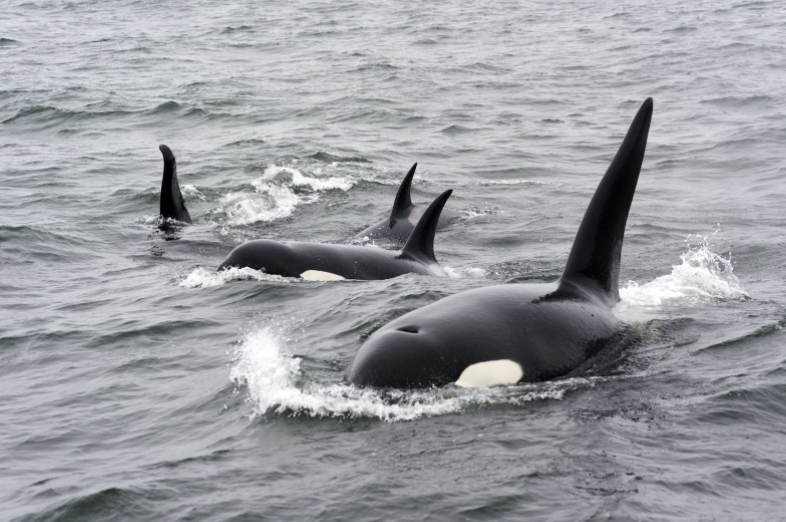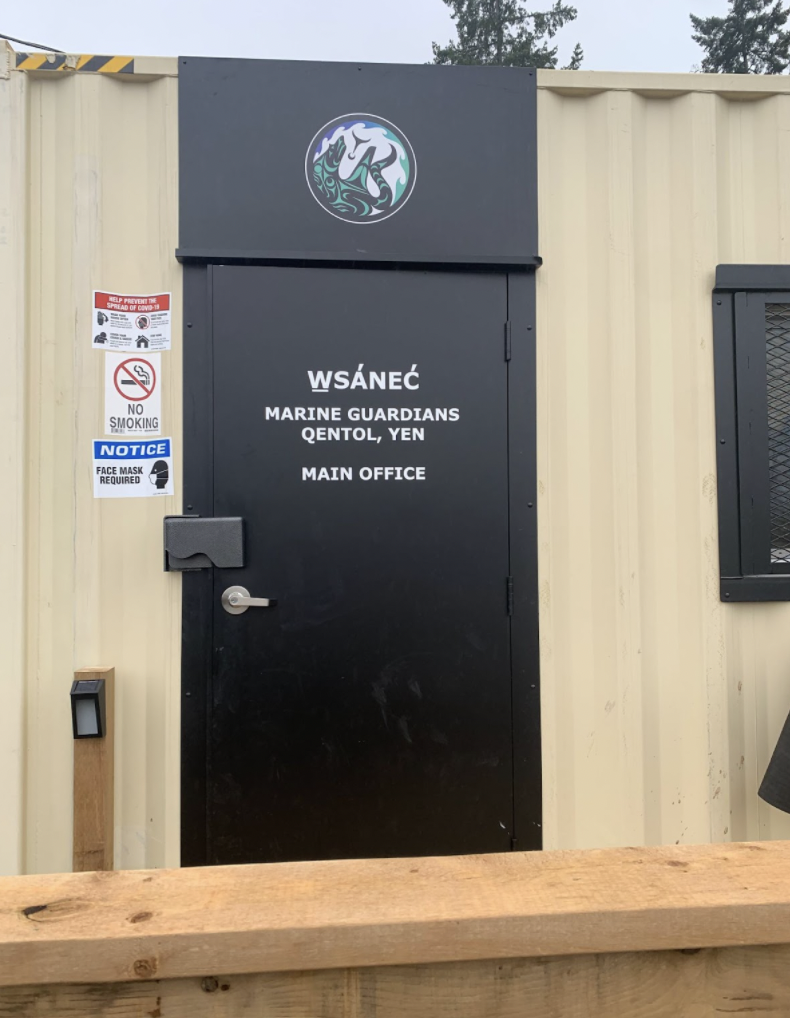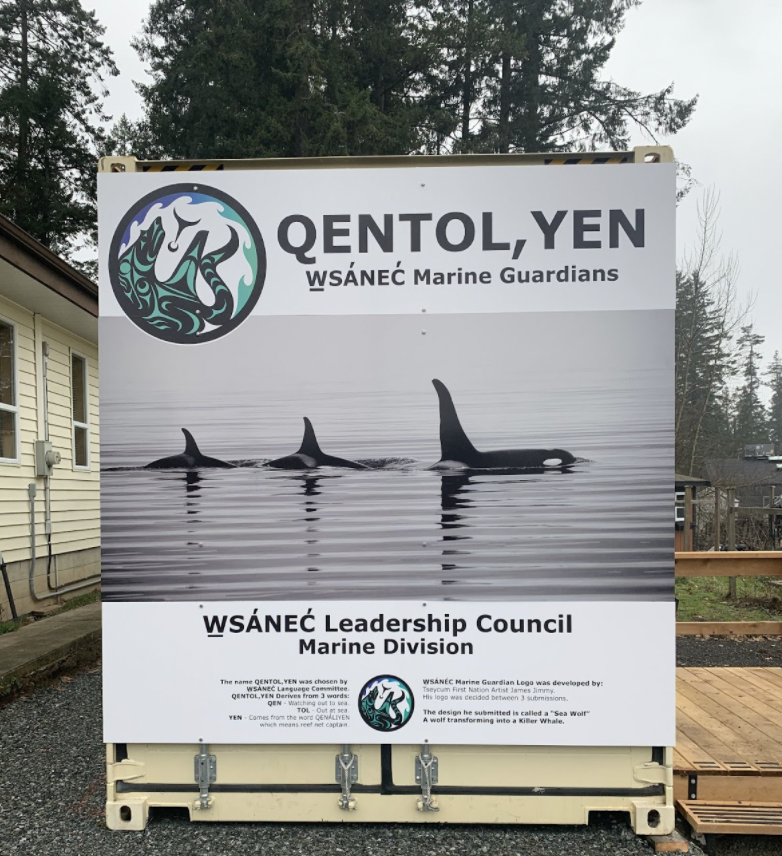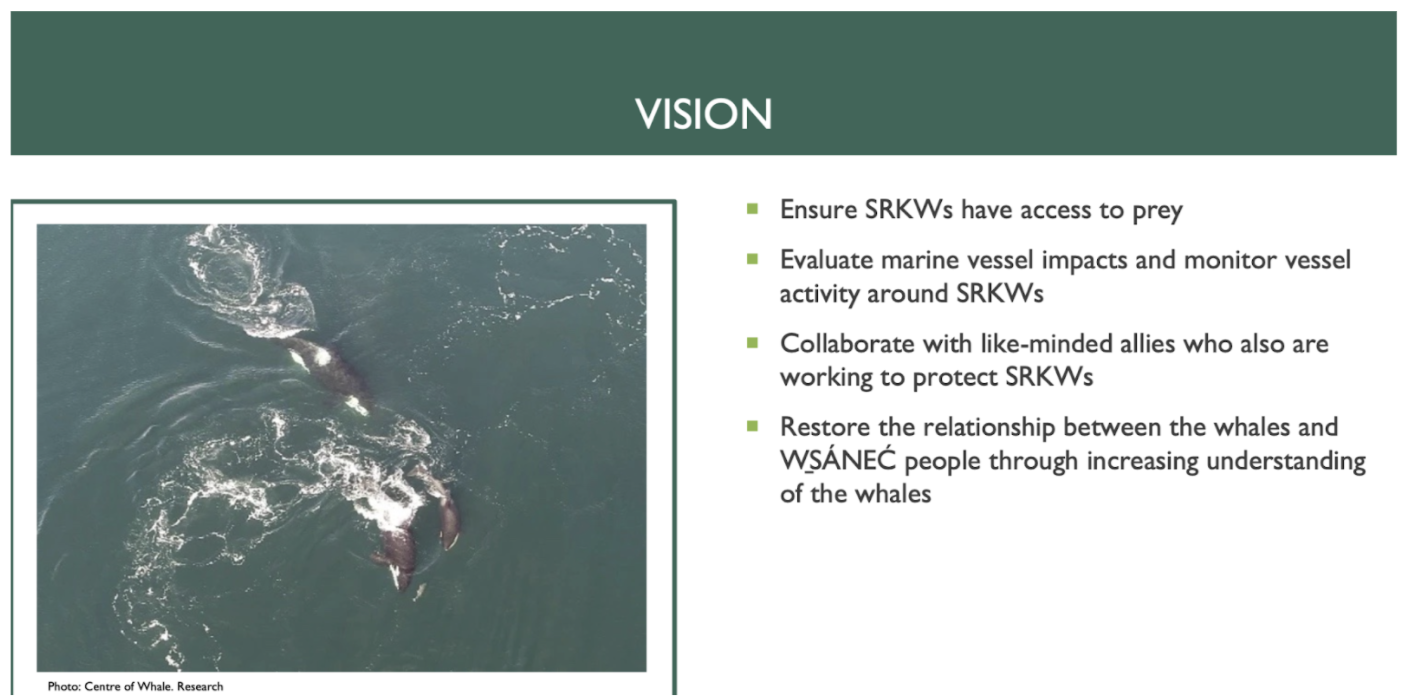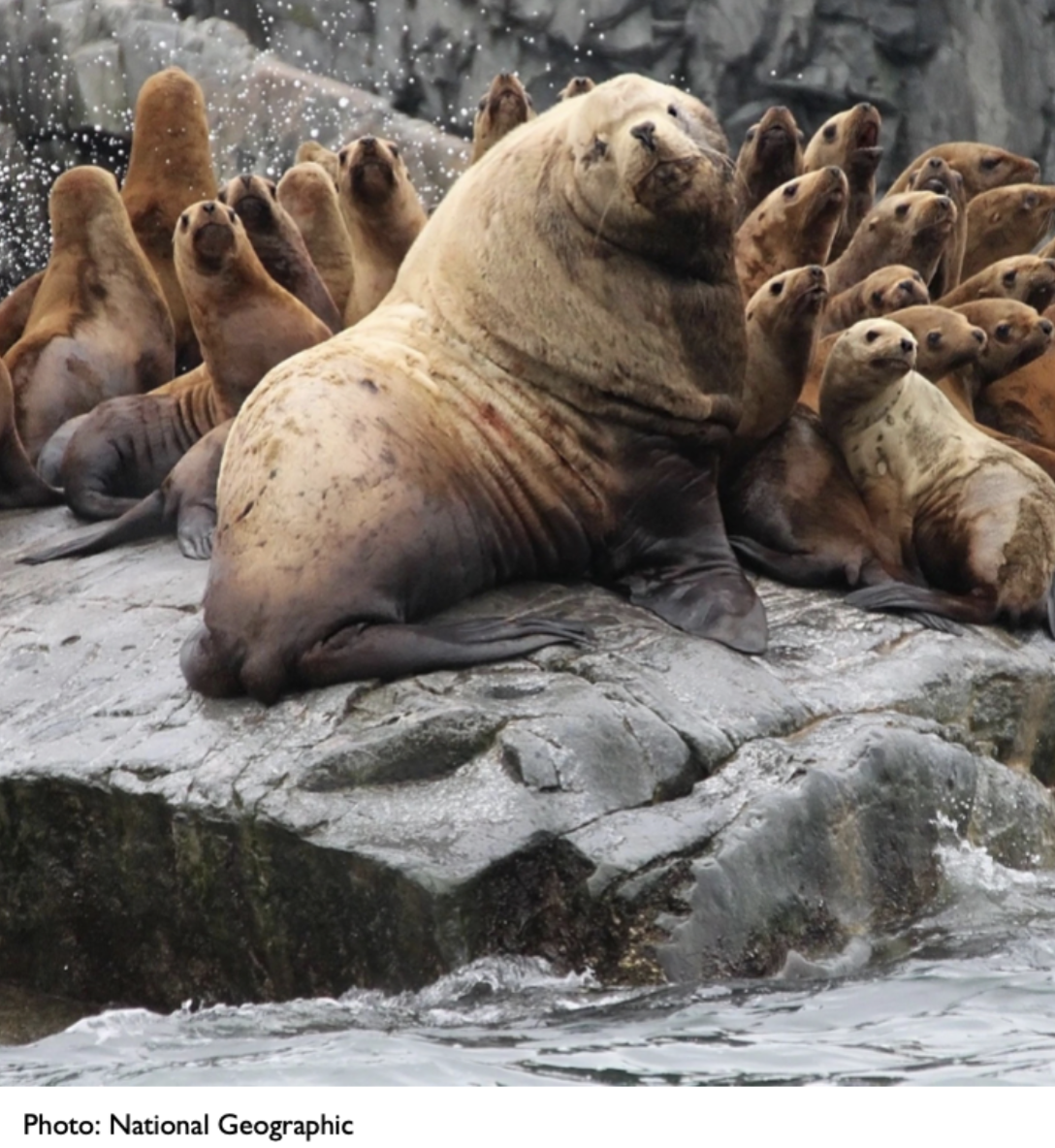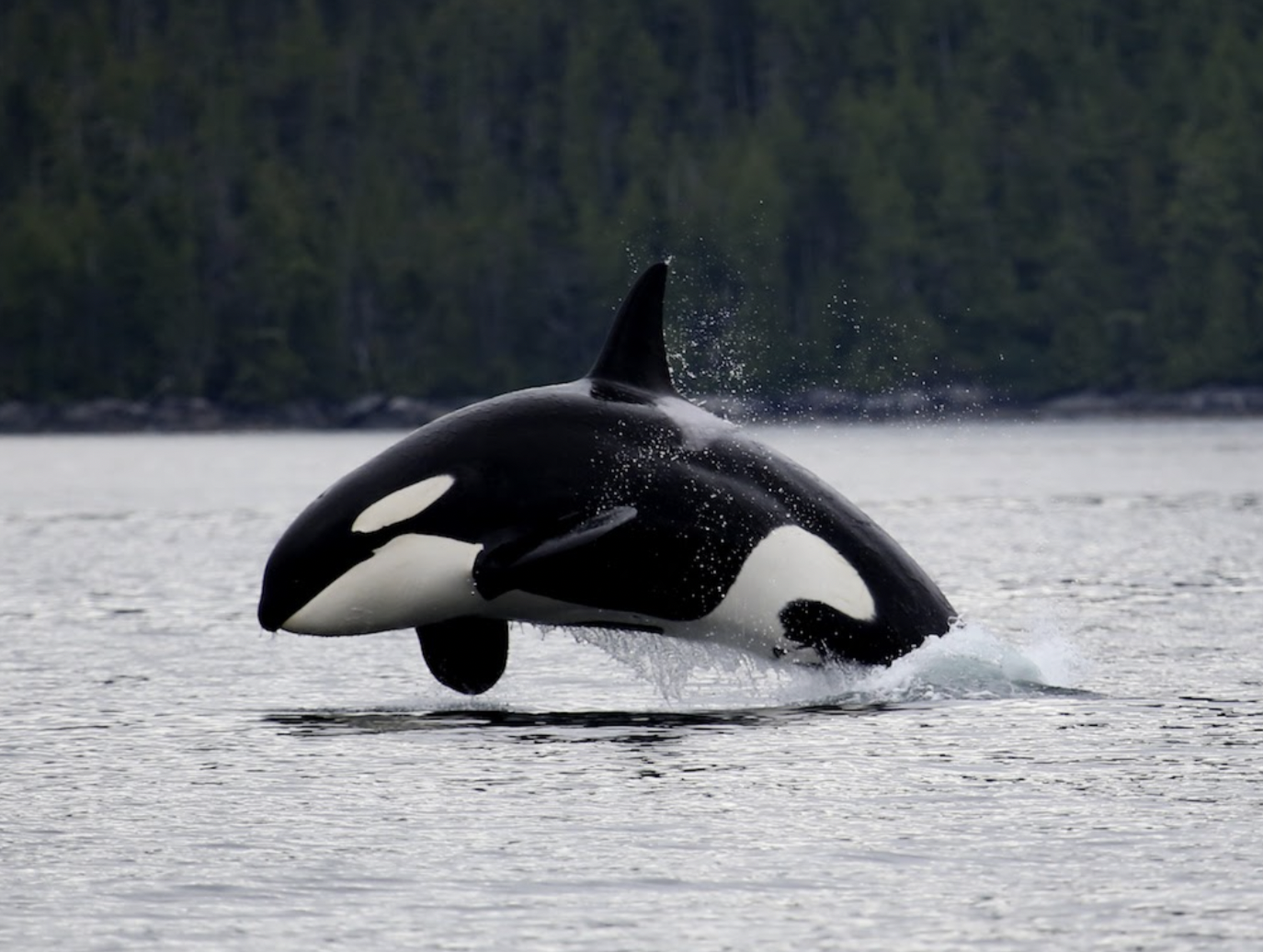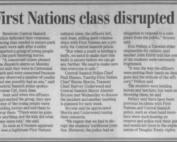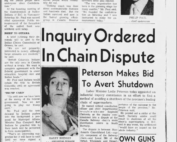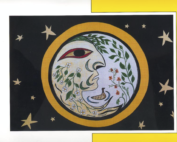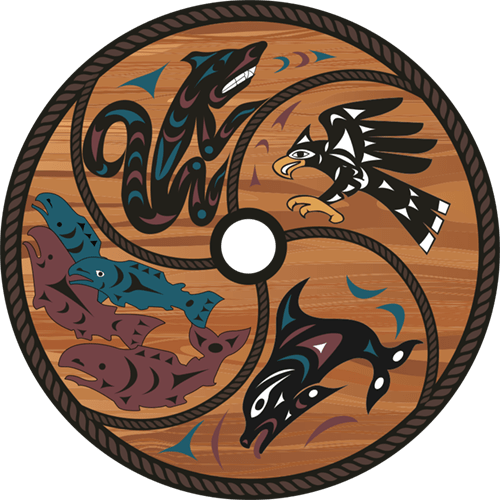The QENTOL, YEN W̱SÁNEĆ Marine Guardians Program Updates:
The QENTOL, YEN W̱SÁNEĆ Marine Guardians program is making remarkable progress in restoring W̱SÁNEĆ people’s sacred relationship and responsibilities to the KELL̵OLEMEĆEN / endangered whales.
In 2021, The QENTOL, YEN W̱SÁNEĆ Marine Guardians began by hiring Senior Manager David Dick, who has since made great strides in establishing the project’s foundation for success. Among the progress made so far, David has established a community led plan for: monitoring the endangered whales, collaborating with like minded organizations, and re-establishing cultural connections between W̱SÁNEĆ people and the KELL̵OLEMEĆEN / Resident Whales.
Establishing a foundation for success
“We wanted to set up a successful foundation and a home for the team to show pride in what we’re going to do,” shares David Dick, the Senior Manager of the program. “We are just at the beginning stage of the process,” Dick continues from the program’s new office, a yellow 40-foot shipping container, located just a minute’s walk away from the boat ramp on the Tsartlip reserve.
Shown above, the The QENTOL, YEN W̱SÁNEĆ Marine Guardians office
Pride in the work is already evident: “I’ve assembled all the furniture myself, and the office is at 75%, it’s almost done,” Dick continues, smiling. Along with the establishment of a new home for the project, The QENTOL, YEN W̱SÁNEĆ Marine Guardians program has also been officially established, complete with a community-created logo prominently displayed on uniforms and communications materials. As for the team, the first member has already been hired. The addition of Molly Fraser as the Marine Biologist provides a valuable resource for the technical execution of The QENTOL, YEN W̱SÁNEĆ Marine Guardians program. A final element of the foundation is expected to arrive in April. After months of waiting, The QENTOL, YEN W̱SÁNEĆ Marine Guardians program will have their very own boat to facilitate monitoring activities and more.
Beyond the logistical elements (such as staff and equipment) the most important piece for the success of the program is the creation of the Knowledge Holder’s’ Committee. Consisting of one representative each from Tsartlip, Tseycum, and Tsawout, two language experts, and two technical experts, the committee will support The QENTOL, YEN W̱SÁNEĆ Marine Guardians program with their work.
“It’s so important for us to have a Knowledge Holder’s’ Committee to give us feedback, help guide us and ground us. I am not the expert, so I recognize we will need help and support, especially when sensitive topics arise.” Dick explains.
The development of the vision and implementation plan has been presented to and enthusiastically endorsed by the Knowledge Holders. Guiding the program activities are four pillars: cultural restoration, habitat monitoring, baseline monitoring, and compliance monitoring.
Shown above, an excerpt of the Marine Guardians Execution plan
Habitat, Baseline and Compliance Monitoring
Monitoring the habitat of the KELL̵OLEMEĆEN / SRKW involves first establishing a baseline of relevant data. Included in this baseline data is an understanding of the health and availability of the salmon population, the rates of competition from other animals, and the impact of transient pods on the resident pods. Next, analysis of the data collected will guide restoration and enhancement efforts to salmon habitats, along with ongoing public education efforts to illustrate the important links between salmon habitat and the health of the KELL̵OLEMEĆEN / SRKW populations.
The population of sea lions and other animals competing for salmon impacts the availability of prey for the KELL̵OLEMEĆEN /SRKW.
Compliance monitoring involves on-water monitoring via the fully staffed QENTOL, YEN W̱SÁNEĆ Marine Guardians program boat. The on-water monitoring will gather visual and audio-based data regarding threats to the KELL̵OLEMEĆEN / SRKW (such as marine vessel traffic) and will provide education to boaters. Finally, having additional W̱SÁNEĆ community members on the water will hopefully discourage those who choose to not comply with marine vessel regulations.
Collaborative efforts
One of the ways to increase the efficacy of The QENTOL, YEN W̱SÁNEĆ Marine Guardians program is to collaborate with organizations that are already working to improve the health and population of the endangered KELL̵OLEMEĆEN /SRKW. “We’ve been wanting to work with like-minded people – whether that’s with respect to protecting the whales or monitoring them in a form that is meaningful,” Dick shares.
The most recent collaboration is with the Royal BC Museum, where David and Molly presented for World Whale Day to raise awareness of the magnificence of whales, their beauty as well as their ecological value to the planet.
By attending the online presentation, attendees learned how to be better friends to humpbacks and killer whales when operating small crafts on the water, and find out more about The QENTOL, YEN W̱SÁNEĆ Marine Guardians program and its goals.
Another collaboration is underway is with www.BCWhales.org, an organization that has already established highly effective data gathering capabilities in 18 remote locations along the BC Coast in collaboration with partners of the BC Coast Wide Hydrophone project. The data BC Whales collects is primarily from the use of hydrophones; non-invasive listening devices that can capture the sounds of the sea.
Image courtesy of www.BCWhales.org
Janie Wray, the founder of www.BCWhales.org shares, “Whales have their own language and acoustic culture and we can learn a tremendous amount about them through the variety of calls they make.”
Different call types can be traced through what is called the matriline, or matriarchal lineage of each whale, meaning the acoustic dialect or language of individual whales can be traced back to their pod and clan. According to BCWhales.org:
- A clan is a collection of pods that share a number of common calls, most likely resulting from a continuous lineage that long ago shared a common ancestral pod. As the ancestral pod grew in size, it probably broke into smaller sub-pods that developed increasingly distinct dialects as generations progressed. The acoustic tradition of each separate pod was passed on for generations, gradually incorporating slight acoustic variations, and resulting in the variety of dialects that we hear today. Using this logic, the closer related members of a clan are, the greater amount of calls they will share.
Wray elaborates: “Using a hydrophone we can identify what species of whale or orca are in the area. We can differentiate whether it is a resident or transient whale via the call type. In some situations, we can tell by the sounds they make what kind of behavior is happening, even miles away. For example, when humpback whales bubble-net feed they make a very specific type of call. Or when humpbacks sing along the coast of BC in late fall could indicate potential mating or formation of social groups.”
The sounds captured through a hydrophone also include marine vessel noise and, in aggregate, the sounds can be translated into incredibly valuable whale behavior and habitat use data.
“When we’re collecting this data, we can then compare a high abundance of whales vs. marine traffic and ask and answer the question: do different levels of noise have an impact on where they decide to reside?”Wray continues
Given the incredible value of the hydrophones and the expertise www.BCWhales.org can offer, The QENTOL, YEN W̱SÁNEĆ Marine Guardians, and BC Whales will be working together to set up an additional hydrophone within traditional W̱SÁNEĆ territory.
“We narrowed it down to three potential locations. After careful consideration along with discussions with our SRKW Knowledge Holders’ Committee. The committee agreed that SISȻENEM was the best island and it just made sense to put it in that location. It’s along the main transit route of all orcas, shipping containers, and ferry traffic, so it’s in a location that can gather a lot of data,” shares Dick.
Re-establishing Cultural Connections
Another way, Dick hopes to benefit from the relationship with www.BCWhales.org is to get W̱SÁNEĆ students out on the water, collecting and analyzing whale-related data for school credit.
“As a longer-term goal, we want to use this partnership to work with the youth at the Tribal School and surrounding schools to see if there’s a way to give students credit for getting hands-on experience,” Dick shares.
Wray at www.BCWhales.org is enthusiastic about the idea: “We have a lot of students, all the way up to the Masters and Ph.D. level, working with us collecting sightings data, analyzing water samples as well as eco signatures. Sharing the data is the only way to save the whales.”
The data captured through these various methods can help aid understanding of which whales are in the area, how many there are, their habitat preferences, nutritional availability, and population changes.
In the short term, Dick is also developing a book of short stories for youth, using words in SENĆOŦEN to introduce whales as the protectors of the sea. The intention is to develop the book into a series that would be included in the curriculum.
Dick shares, “I am always looking for opportunities to give back to my education, it’s one of my goals. If just one elementary school child gets interested in working with the whales then I feel I have succeeded, that we have done something positive.”
As for what’s next to come for The QENTOL, YEN W̱SÁNEĆ Marine Guardians, Dick is excited: “We’re already attracting a lot of the right, like-minded people to help us execute our vision. We plan on hiring at least two more people this year.”
To stay up to date on this story and others, please sign up for our newsletter.


